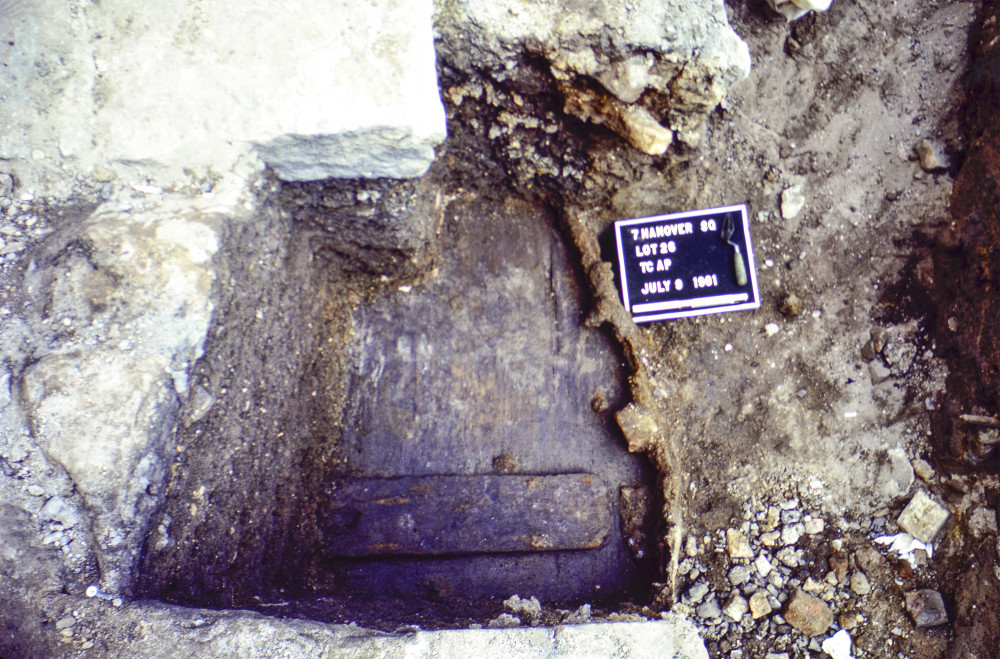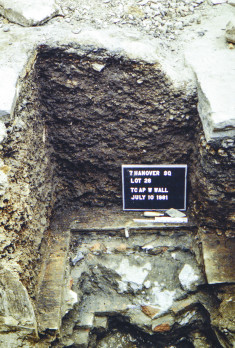This context (Catalog #1102: Lot 26*, Test Cut AP, Strat 2, Level a) consists of artifacts found from a cistern associated with the Pearl Street House, a hotel in operation from 1825 until 1853. Sometime after the Croton water system brought running water to the building in the late 1830s, the then-obsolete cistern was used as a place to discard unwanted or broken items. This specific deposit contained artifacts found in a dark gray/brown silty sand within the cistern. Additional information about the excavation can be found below.
The cistern feature, bounded by decaying wood and filled with what appeared to be coal and cinder, was found during the initial exploratory phase of the project in Backhoe Trench 12, which was excavated towards the rear portion of Lots 10* and 26*. The deposits within the feature were tested by Test Cut AP. The excavation of Test Cut AP indicated that there were areas of rusted metal bands or straps which served to hold the vertical board sides of the feature together. It also appeared that brick and mortar were poured outside of the cooperage to further support the feature. The full extent of the feature was not able to be determined, but the excavators believed that it was likely oval in shape and that its east to west extent may have been approximately eight to ten feet while its north to south extent 12 to 15 feet.
The topmost two to four inches excavated from the cistern consisted of overburden deposited during clearing operation. Beneath this, the feature deposits within the cistern were encountered. The feature deposits were approximately three feet in depth and the floor of the cistern was reached at a depth of 42 inches below the excavation surface (33 inches below the test cut datum). The deposits within the feature were described by excavators as a dark grayish brown silty sand with coal, which are captured in this context record. Below this, the material consisted of a mixture of grayish, yellowish and rust brown silty sand. The ceramic assemblage within the feature appeared to date to the period of circa 1840 to 1850. The material beneath the feature floor was also excavated.
After excavation, the feature was determined to be a large cistern, which at one point during the 19th century, served the structure which stood on Lots 26* and 27* that fronted Water Street. An additional cistern was found in Test Cut AN which likely served the Pearl Street House referenced above. After additional research, it is believed that Lot 26* was incorporated into the Pearl Street House in 1824. It is likely that this cistern was constructed prior to the incorporation of Lot 26* into the Pearl Street House, but that it almost certainly served this establishment as well. It is likely that the period of use of the cistern ended following the availability of piped-in water after the completion of the Croton Aqueduct in 1842.
-
Collection method
This context was excavated using trowels. All soil was dry-screened using 1/4 inch mesh.
-
Soil
Dark gray brown silty sand with coal
-
Munsell
Not recorded





